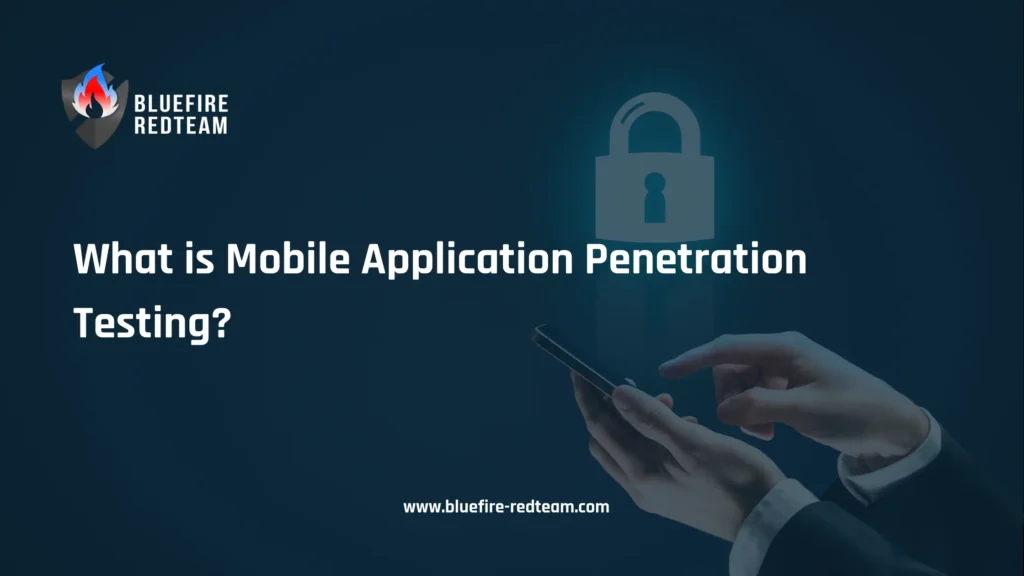Mobile applications are essential to daily life in today’s hyperconnected world, encompassing social networking, healthcare, banking, and shopping. Because of our increasing reliance on mobile apps, protecting them from potential threats is not only crucial, but also crucial. This is where mobile application penetration testing comes in.
Understanding Mobile Application Penetration Testing
Mobile application penetration testing is a simulated cyberattack performed on a mobile app to identify security vulnerabilities that a real attacker could exploit. It imitates the methods, resources, and approaches that hackers employ to find flaws in iOS and Android apps.
This type of testing is not limited to automated scanners. In order to find logic errors, business logic mistakes, insecure configurations, and other hidden threats that machines frequently overlook, it entails manual, human-led analysis.

How Mobile App Penetration Testing Works
A comprehensive mobile pentest typically includes:
- Static Analysis (SAST): Reviewing source code or decompiled binaries to find insecure coding practices.
- Dynamic Analysis (DAST): Running the app in a real or emulated environment to observe its behavior and detect runtime vulnerabilities.
- API Testing: Ensuring the app’s communication with backend services is secure.
- Reverse Engineering: Decompiling the app to assess code obfuscation, secrets, and sensitive logic.
Popular tools include Burp Suite, Frida, MobSF, Objection, and Jadx.
Key Mobile Application Vulnerabilities Tested
Mobile apps are susceptible to a range of vulnerabilities. Penetration testers often align their assessments with the OWASP Mobile Top 10, which includes:
- Insecure data storage
- Insecure communication
- Improper platform usage
- Inadequate authentication/authorization
- Code tampering
- Reverse engineering risks
- Insecure third-party libraries
Compliance and Standards
Many industries require regular mobile app testing to meet compliance frameworks such as:
- OWASP MASVS (Mobile Application Security Verification Standard)
- HIPAA (Healthcare)
- PCI DSS (Payment apps)
- GDPR (User data privacy)
A quality pentest not only helps meet these standards but also builds user trust.
Who Needs Mobile Application Pentesting?
Any business that relies on mobile applications should consider regular pentesting, especially:
- Fintech and banking apps
- Healthtech and wellness platforms
- On-demand service providers
- SaaS providers with mobile components
- Startups getting ready to raise money or go public
When to Conduct a Mobile Pentest
- Before app launch
- After major updates or code changes
- Annually or bi-annually as part of cybersecurity hygiene
- In response to compliance or breach triggers
What to Expect in a Pentest Report
A professional pentest report includes:
- Executive summary for stakeholders
- Technical findings with CVSS scores
- Proof-of-concept (PoC) exploits
- Screenshots and logs
- Remediation recommendations
How Bluefire Redteam Approaches Mobile Pentesting
Bluefire Redteam conducts compliance-driven, manual-first mobile penetration testing. Our skilled security experts are experts at identifying actual attack routes that automated tools are unable to identify.
We focus on:
- Full alignment with OWASP MASVS
- Secure code review and runtime analysis
- Business logic testing and exploitation
- Detailed, actionable reports
- Post-engagement remediation support
Ready to Secure Your App?
Want to know if your mobile app can withstand real-world attacks?
[Book a free consultation] with our mobile security team to uncover hidden vulnerabilities before attackers do.
Frequently Asked Questions(FAQs) - Mobile Pen Testing
- What is the goal of mobile application penetration testing?
To uncover and fix security vulnerabilities before real attackers can exploit them.
- Which platforms are covered in mobile pentests?
iOS and Android are the primary platforms tested.
- How often should a mobile pentest be performed?
Ideally before launch, after major updates, and at least once per year.
- What is OWASP MASVS?
It's a standard for ensuring secure mobile app development and testing practices.
- Does Bluefire Redteam test both frontend and backend?
Yes, we test mobile app binaries and backend APIs for comprehensive coverage. Learn More.


